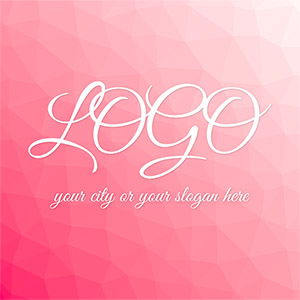Known as Neue Haas Grotesk until 1960, it was quickly adopted by graphic designers around the world because it allowed them to actively implement an important concept: giving priority to the message delivered and no longer to the form of the message.
It's not typical of any era; it's not sad or joyful, it evokes neither love nor hate. Its neutrality lets the message express itself, lets the icon take the central place of the logo. This symbol of Swiss typography lends itself to all kinds of uses and at the beginning of the 1980s it became the most widely used typeface...and also the most abused.

Miedinger/Hoffmann



Where the previous design was rigid and very classic, the Helvetica helped to show off the modernism of the company while reflecting German quality and seriousness to international travelers. Mission accomplished, the company successfully used this logo for 55 years (1963 to 2018).
For the record, the Lufthansa stork drawing dates from 1918...8 years before the creation of the Lufthansa itself!


This 1987 logo remained the official Microsoft logo until 2012.


This logo has changed frequently throughout the company's history, and it was not until the 3M company began using Helvetica that it finally settled its brand image and that of its products. Some logos created over 40 years ago are still in use today!
The Scotch logo during the redesign "Helvetica" was first written in Helvetica Bold (1979), before taking on additional grease and being written in Helvetica Black (1985).

1979

1985
Yves Saint Laurent (Helvetica Bold)
A logo can mark people with its history, because it's beautiful or because it shocks us. This one will rather be placed in the category "made an impression on us, but not for the right reasons".

We take the same recipe as the 3M company for the Scotch brand and we start again. But the positioning and target markets of the two are diametrically opposed and if the Yves Saint Laurent label is synonymous with creativity, culture and good taste, these qualities do not appear at first glance in this new logo. Where the old one was a marvel of rhythm and modernity, the current one is of a frustrating conceptual poverty.
This is not a bad logo, don't get me wrong, but the disappointment with its presentation was unanimous, except apparently for its creator and the brand itself.
Original



Tupperware has always had logos that are typical of their time at each redesign, culminating with a delightful seventies logo in 1974. But 20 years later, in the age of microwaves and ready meals, kitchens are no longer dark brown but lighter and everything looks cleaner. A rejuvenation was becoming necessary for the brand to fully enter the new millennium that was looming. Mission accomplished, this 1994 logo still looks modern in 2020. Thank you Helvetica.
1974

1994


Designed by an Italian, Massimo Vignelli, the precepts that guided the creation of this logo are close to those that accompanied the Lufthansa logo four years earlier; it was necessary to suggest the modernism and seriousness of the company to travelers, to promote a smooth image with no surprises, and the Helvetica font in 1967 corresponded exactly to this objective.
Throughout his life Massimo Vignelli was a great supporter of Helvetica and used it in many works. He also collaborated with other notable companies such as Ford, IBM, Knoll and the New York subway, whose signage is largely defined by the use of this font.


Today, we can see that it has gradually disappeared from logos, replaced by others. Designers are rediscovering it, once again appreciating its balance and harmony. It's no longer the default font, the one we used to see anywhere and everywhere. It again becomes what its creator wanted: the quintessential neutral writing.
At DocLogo, we love it and can only advise you to use it. Ideally, a logo created with a neutral font should be accompanied by a strong symbol. This system is the basis of the logo generator we have created. Come and discover on DocLogo.com what a modern logo generator can do for your image!











